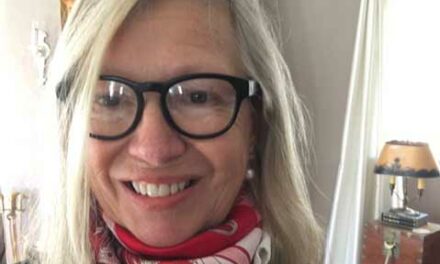Classical Music Meets DIY
By Ed Goldman
Just because you wouldn’t bring in a new manager for each basketball, baseball or football game doesn’t mean, if you were running a highly successful musical organization, it wouldn’t make sense to bring in a new conductor for every program.
That’s how Alice Sauro, the general manager and artistic director of the Sacramento Philharmonic & Opera for the past five years, managed to turn around the once-moribund Sacramento Symphony and Sacramento Opera companies into a unified community treasure that has been selling out almost every performance for the past two years.
“No,” she says emphatically over a recent lunch, “we never paper the house. That’s not fair to anyone, including the musicians. Now, we do discounts as appropriate—we’re bringing in a group of 50-to 60 home-schooled students for a concert, because for many of them, this will be their first experience with ‘live’ music—but the ‘comp list’ is tiny.” She shows me a bar graph that illustrates her point as well as the $2 million organization’s remarkable revenue growth since 2015.
She seems annoyed by my question about papering the audience (which just means to make sure every seat is filled whether paid for or not, mainly for optics). But annoyed in a gracious way: a nose wriggle, slight frown and slightly huskier tone, as befitting a Midwest transplant who spent the bulk of her professional life in the comparative shadows, as a violinist (usually first chair) for the highly regarded Detroit Symphony Orchestra. She became an administrator and artistic director when a longtime shoulder and neck injury sidelined her.
“I never expected to be the person who walks out on a stage before thousands of people and welcomes them to a performance,” she says, still slightly amused by the prospect. Yet, she says, the Sacramento community, some of whom were left holding subscriptions to nothing a number of years ago when the Philharmonic’s predecessor company folded, “has absolutely embraced our comeback story.”
The group did it by reaching out to its former and potential audiences, and without pandering to them by booking simpleton events geared toward selling seats but hardly elevating the art.
On Valentine’s Day, the Sacramento Philharmonic and Opera will perform the “Music of the Spirit” at downtown Sacramento’s resplendently restored Cathedral of the Blessed Sacrament. It will be conducted by Douglas Boyd and include selections such as Vaughan-Williams’s “Fantasia on a Theme by Thomas Tallis—which I went to YouTube to hear the Toronto Orchestra perform: it’s a gorgeous piece of music—and Gabriel Faure’s “Requiem.”
Best of all, and something that differentiates this music company from any other in California, is that there’ll be a different conductor for its remaining two shows, just as there have been different maestros for each show for the past couple of seasons: Beethoven’s Symphony No. 4 and Saint-Saens’s Symphony No. 3, “Organ Symphony,” under the watchful baton of Robert Moody (March 13) and an opera finale April 25, conducted by Christoph Campestrini. Tickets and details are at sacphilopera.org.
I ask Sauro if the audience or performers find this do-it-yourself approach to the season—as opposed to having an in-house conductor around all the time, the business model followed by most orchestras—a bit (incoming pun!) disconcerting.
“People have been thrilled,” she says, grinning widely. ”They enjoy the different styles, whether that means the actual conducting or how the conductors talk to the audience, and it keeps the musicians stimulated.”
* Photo courtesy of Sacramento Philharmonic & Opera.
Ed Goldman's column appears almost every Monday, Wednesday and Friday. A former daily columnist for the Sacramento Business Journal, as well as monthly columnist for Sacramento Magazine and Comstock’s Business Magazine, he’s the author of five books, two plays and one musical (so far).












